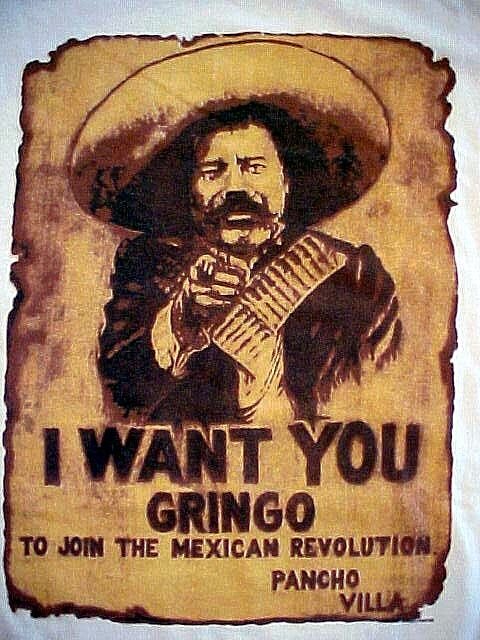Susan Krawitz on Viva, Rose! (Part 2 of 2)
 [Uma] In historical fiction the research can take its own time as well. How much research did you have to do? What were your sources?
[Uma] In historical fiction the research can take its own time as well. How much research did you have to do? What were your sources?
[Susan] I did SO MUCH RESEARCH. Whoops, that’s in caps. Sorry.
So much. That’s better.
One really, really great source was a book by well-known journalist John Reed called Insurgent Mexico. He was history’s first embedded journalist, tasked by a publication called Metropolitan Magazine to live with Villa’s army for four months and send stories back home. Reed was hugely sympathetic to the revolutionary cause, and wrote passionately detailed articles about the revolution and its people that read like fiction. He was one of the first journalists to employ this technique, which is now widely used by modern journalists.
I also studied all I could find about Jewish settlement in the west, using online sources, non-fiction books, and fiction, including picture books. One, Zayda Was a Cowboy, by June Levitt Nislick, was named a Sydney Taylor award notable book by the Association of Jewish Libraries, which led me discover that the AJL also offered an annual manuscript award.
 [Uma] Which you won! Congratulations. Like nesting dolls, one thing led to another.
[Uma] Which you won! Congratulations. Like nesting dolls, one thing led to another.
[Susan] Thank you. I believe winning this award, which is intended to lift books out of the slush pile, was instrumental in getting Viva, Rose! published.
I could say some of my own life experience served as “research” as well. Before my daughter was born, I spent a lot of time riding horses and climbing rocks (my one and only trip to Texas was to a climbing site near El Paso), and those experiences ended up in the book.
And last and most fun, I did some genealogical searching, with the help of my sister and her friend, on the web. We uncovered all kinds of fabulous information about our Texas relatives from old census records. We also discovered some of their descendants still live in San Antonio, and I recently sent one an email—and he actually wrote me back.
[Uma] How did you balance big historical realities with a sharper, closer look at the journey of a single character?
[Susan] It can be a challenge to fully serve history and also fully serve a fictional character in a fictional story. Though ultimately, I couldn’t plop all the nerdy research details I loved into the book, I felt they served as a sort of a radiant, energetic imprint beneath the story. And it wasn’t possible to adhere strictly to the whats and whens of the Mexican Revolution—if I did, the fictional tale would suffer. But the issues and events of the time HUGELY informed the book’s character and plot choices. I hope I conveyed an accurate energetic sense of the hopes, fears and goals of the people involved in the Mexican Revolution. Which, not surprisingly, are also the hopes, fears, and goals of many in today’s world, as well.
[Uma] Anything else you’d like to add?
[Susan] One of the best parts of this book’s award and publication was the delightful discovery that not all who wander are indeed, really lost.
Viva, Rose!, which is the first book I’ll publish, took over a decade to go from inception to print, but it’s clear to me that everything I’ve ever done in the writing vein contributed to this outcome. The time spent as a journalist and newspaper columnist, the short stories and screenplays I wrote, the years as a freelance editor; even the bad poetry I wrote in college. All of it went into some huge mental and emotional MixMaster and became the slurry that formed this book.
There were some huge bumps along the road (including an agent who signed, then dropped the book before submitting it!), and it’s such a relief to realize that all the side gigs, delays, and wanders were actually not in vain. I see their imprint in this book’s pages and am now so grateful for every step it took to reach this goal. And I’m also grateful that no matter how far (or impossible!) the finish line seemed, I just couldn’t seem to stop imagining it existed and stepping towards it.
[Uma] Imagining it existed. The story itself, the shape it took, and the book. Such a wonderful journey, Susan. Viva Susan, and Viva, Rose!